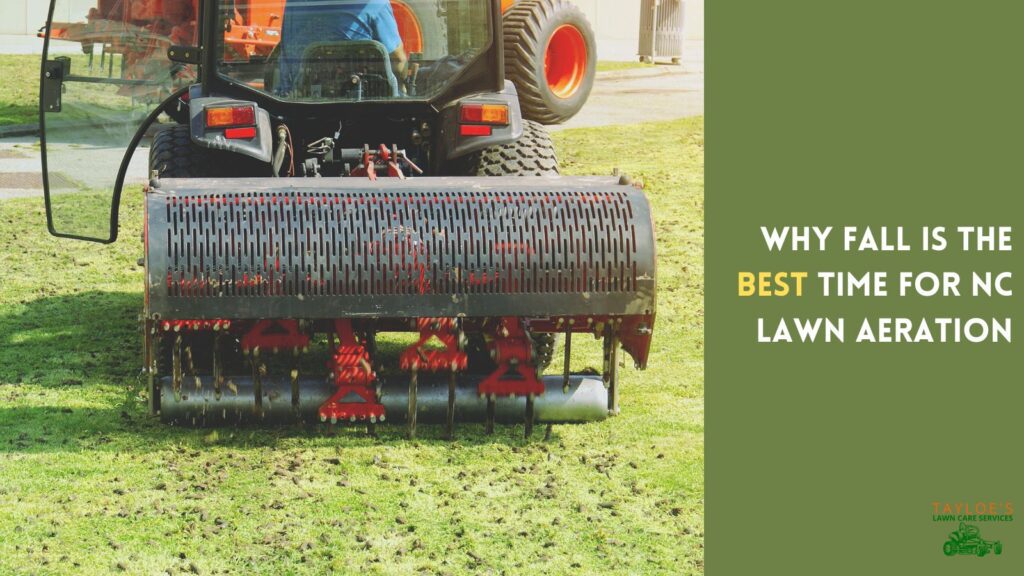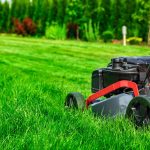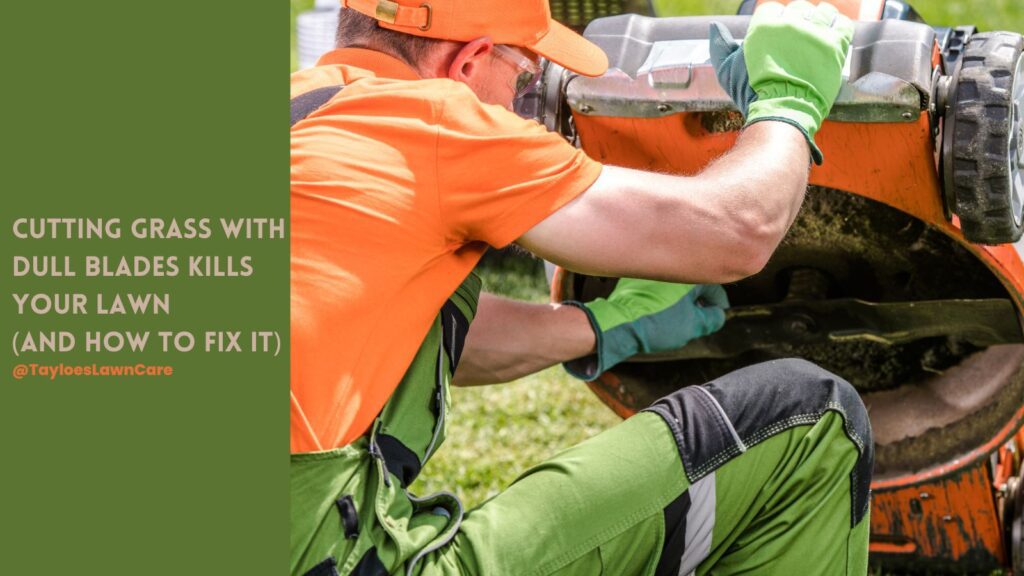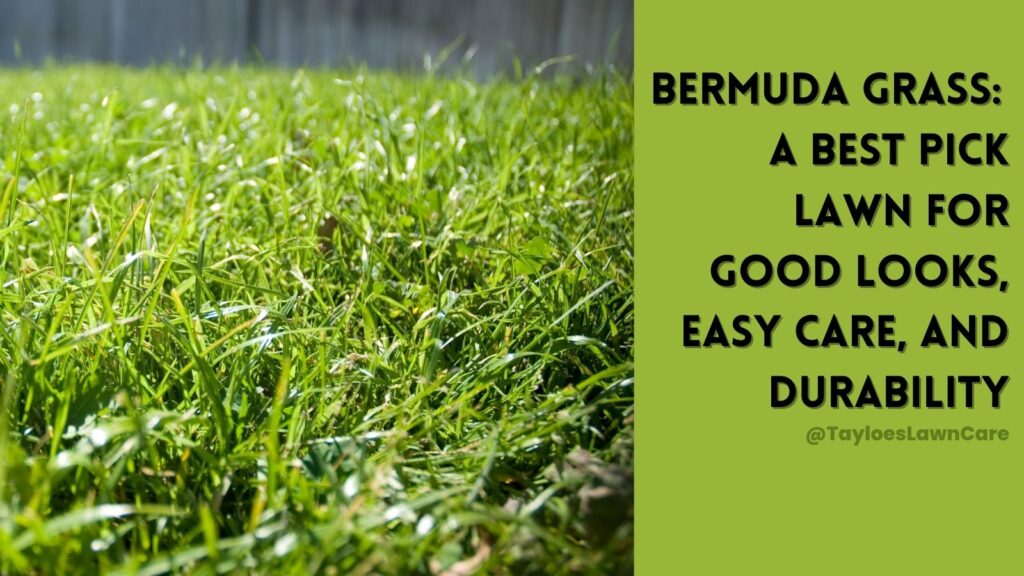Last Updated on: 21st August 2024, 08:38 am
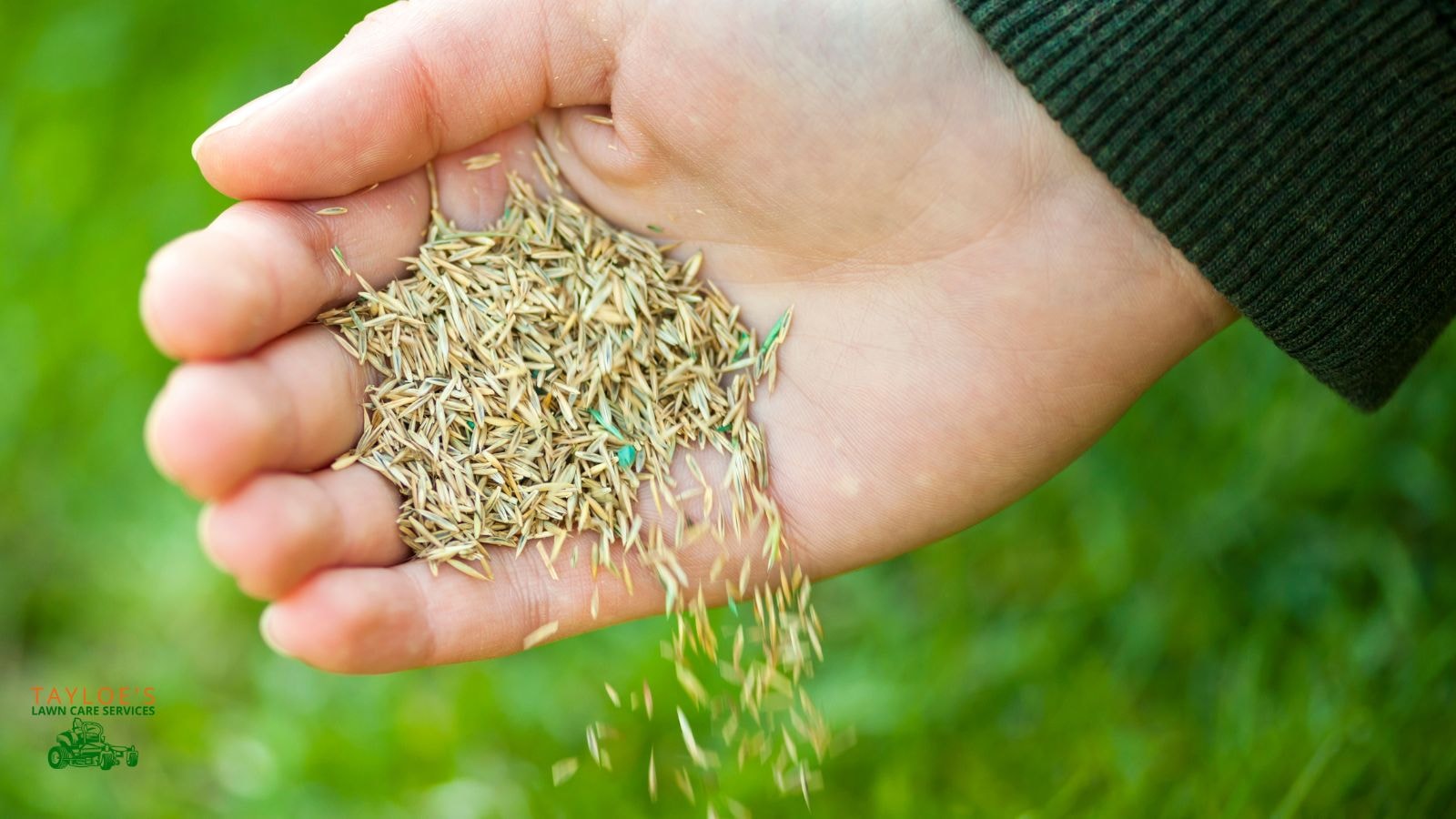
Understanding the overseeding process and why it means healthy lawns.
Excellent lawn care means a lush lawn is the goal for many homeowners. One effective way to achieve this is through overseeding. This technique involves spreading new grass seed over an existing lawn to fill in bare spots, improve the thickness of the turf, and have a healthy appearance. But timing is everything when it comes to overseeding. Let’s explore the best times to overseed your lawn, the process involved, and how it can lead to a healthier, more resilient lawn.
What Is Overseeding?
Overseeding is a lawn care technique that’s essential for maintaining good health. Unlike planting a new lawn from scratch, overseeding involves adding grass seed to your existing lawn. The goal is to fill in bare patches, increase the density, and improve the lawn’s appearance.
Over time, your lawn thins due to heavy foot traffic, pet activity, weather conditions, and aging. Overseeding introduces new grass into these thin or bare areas, giving your lawn a fresh, lush look. Whether you have cool-season or warm-season grass, overseeding can keep your turf looking fantastic year-round.
Why Overseeding Is Important
Overseeding is more than just a way to make your lawn look good. By adding new grass seed, you can improve your lawn’s resistance to weeds, diseases, and drought. Thicker grass helps crowd out weeds, reducing the need for chemical herbicides. Dense turf is also more resistant to diseases and can better withstand heat and drought.
Moreover, overseeding can help repair damaged areas of your lawn. If your lawn has been affected by pests, disease, or harsh weather, overseeding can restore it. It’s also an effective way to introduce grasses that can better adapt to your local climate and soil conditions.
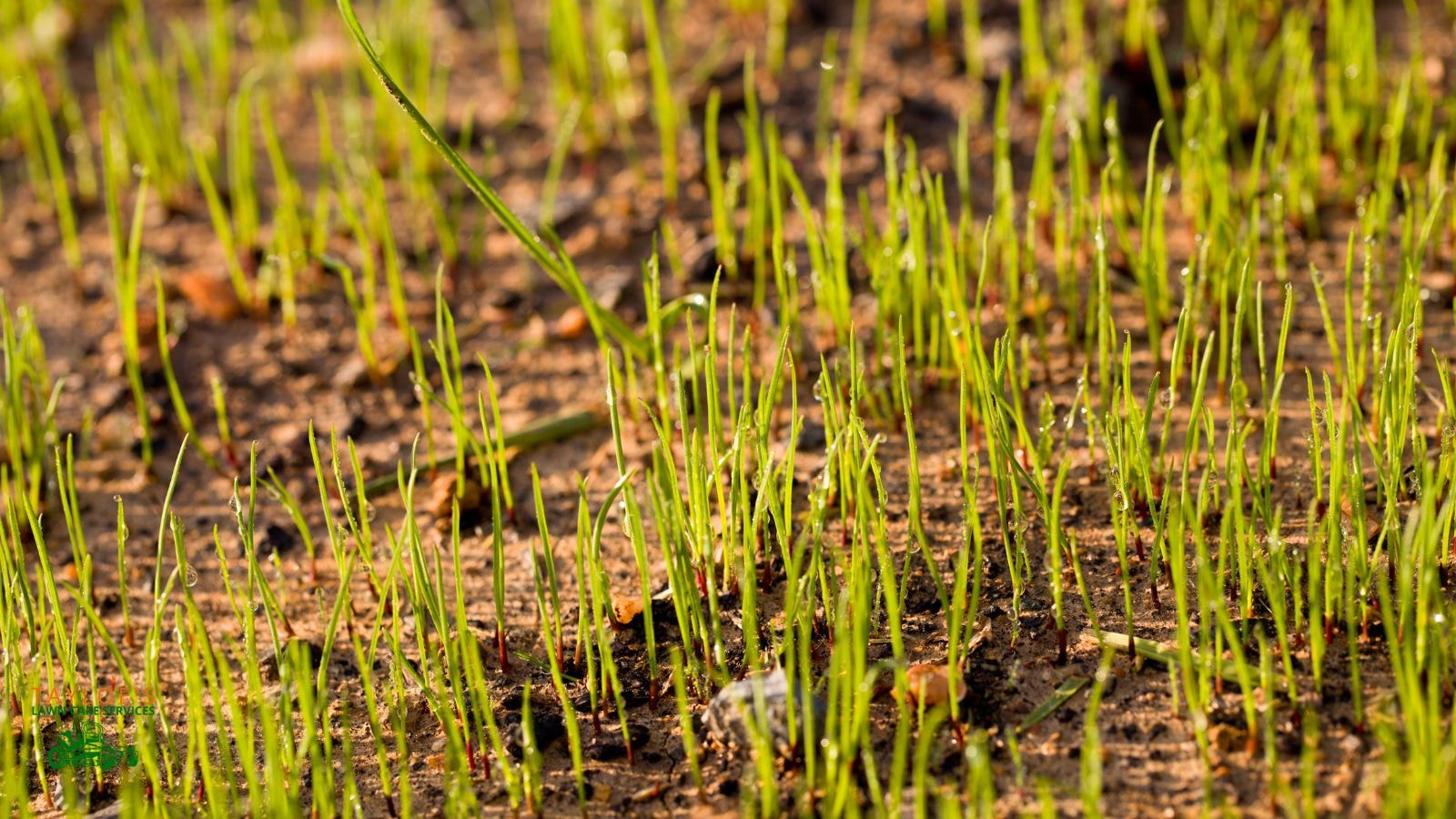
Preparing Your Lawn for Overseeding
Overseeding starts with prep work. The process ensures that the new grass seed will have the best chance to germinate and grow strong. Here are the key steps to follow:
Assessing Your Lawn’s Condition
The first step in preparing for overseeding is to assess the current condition of your lawn. Thin lawns are where overseeding will have the most impact. Also, check for any signs of thatch buildup. Thatch is a layer of dead grass, roots, and other organic material accumulating on the entire lawn. It prevents water, nutrients, and the new grass seed from reaching the soil, so it’s important to address it before overseeding.
Testing Your Soil
Soil health is critical for a successful overseeding project. Testing your soil can provide valuable information about its pH level and nutrient content. Most grasses thrive in slightly acidic soil with a pH between 6.0 and 7.0. If your soil is too acidic or too alkaline, it can affect the germination and growth of the new grass seed.
You can purchase a soil testing kit from a garden center or send a soil sample to a local agricultural extension office for analysis. Based on the results, you may need to amend your soil by adding lime to raise the pH or sulfur to lower it. Additionally, consider adding compost or organic matter to improve the soil’s texture and fertility.
Preparing the Soil Before You Overseed a Lawn
Once you’ve assessed your lawn and tested the soil, it’s time to prepare the ground for overseeding. Start by mowing your lawn to a lower height than usual, around 1.5 to 2 inches. This will help the new grass seed make better contact with the soil. After mowing, remove any debris, rocks, and grass clippings from the lawn.
Next, loosen the top layer of soil to create an ideal environment for seed germination. You can do this by lightly raking the soil or using a core aerator. Loosening the soil helps the grass seed penetrate the surface and take root more effectively.
For lawns with particularly poor soil, consider adding a thin layer of enriched topsoil over the existing grass. Rake the soil lightly to mix it with the existing soil, ensuring that the grass seed will have access to the nutrients it needs to grow.
Choosing the Right Grass Seed
Selecting the right grass seed is a critical step in the overseeding process. The type of grass seed you choose should be compatible with your existing lawn and suitable for your regional climate. Here are some factors to consider when choosing grass seed:
Grass Seed Mixtures
Grass seed mixtures are a popular choice for overseeding because they contain a blend of different grass varieties. These mixtures are often pre-mixed with enriched topsoil, making them convenient to use and promoting healthy grass growth. When choosing a grass seed mixture, look for one that matches your lawn’s existing grass type and is well-suited to your region’s climate.
Cool-Season vs. Warm-Season Grasses
It’s essential to know whether your lawn is made up of cool-season or warm-season grass. Cool weather species, such as Kentucky bluegrass, fescue, and cool-season ryegrass, grow best in cooler climates and are typically overseeded in the fall or early spring.
Warm-season grasses grow best in in warmer climates and should be overseeded in late spring or early summer. Warm season lawn species include Bermuda, zoysia, and St. Augustine.
In some cases, you might want to use a mix of warm-season and cool-season grasses to maintain a lush, green lawn throughout the year. This approach is most effective in regions with mild winters and hot summers, like we have here in NC.
High-Quality Grass Seed Means Great Looking Lawns
Quality matters when it comes to grass seed. Invest in better seed for fewer weeds. Cheap or low-quality seed may contain weed seeds or produce thin grass that won’t hold up to heavy traffic. Look for grass seed with a high germination rate and a blend of varieties that are resistant to common lawn diseases.
Overseeding Your Lawn
Once your lawn is prepared and you’ve selected the right grass seed, it’s time to start overseeding. Follow the steps:
Even Seed Distribution
To ensure even coverage, use a seed spreader to distribute the grass seed across your lawn. For smaller areas, a hand spreader works well. Larger lawns require a drop spreader or broadcast spreader. Be sure to follow the seed manufacturer’s recommendations for overseeding rates – too few or too many new seeds can affect the outcome. Most often, you can find a square foot application guide on the packate.
When spreading the seed, it’s a good idea to make two passes over the lawn, with the second pass perpendicular to the first. This crisscross pattern helps ensure even distribution.
Soil Preparation
After spreading the grass seed, lightly rake the soil to help the seed make good contact with the soil. This step is crucial for seed germination, as the seed needs to be in direct contact with the soil to absorb moisture and nutrients. Be careful not to rake too aggressively, as this can dislodge the seeds.
Starter Fertilizer
A healthy turf needs enriched soil. Applying a starter fertilizer immediately after overseeding can provide the new grass seedlings with the nutrients they need to establish strong roots and grow quickly. Starter fertilizers are an easy-to-use product, specially formulated to promote root development.
When choosing a starter fertilizer, opt for one that is specifically designed for new seed.
Maintain Consistent Moisture
Proper watering is essential for the success of your overseeding project. Keep the soil consistently moist by watering lightly and frequently. The goal is to keep the top inch of soil damp without creating puddles or waterlogged conditions, especially after heavy rain.
During the first few weeks after overseeding, water your lawn daily, as needed to prevent wilting. As the grass seedlings begin to grow, you can gradually reduce the frequency of watering and transition to deeper, less frequent watering to encourage deep root growth.
Timing and Frequency: When to Overseed Your Lawn
The timing of your overseeding project is crucial for achieving the best results. The best time to overseed your lawn depends on the type of grass you have and your geographical location. Here’s a breakdown of when to overseed based on your lawn’s grass type:
Overseeding Cool-Season Grass Types
Cool-season grasses, such as Kentucky bluegrass, fescue, annual ryegrass, and perennial ryegrass, are best overseeded in early fall, approximately 45 days before the first expected frost. This timing allows the new grass seedlings to establish strong roots so you’ll have winter color. Fall overseeding takes advantage of the cooler temperatures and increased rainfall, providing optimal conditions for grass growth.
While spring overseeding is also an option for cool-season grasses, fall is generally preferred because it provides a longer growing period before the stress of summer heat. Spring overseeding can be challenging, as the new grass may struggle to establish itself before summer’s hot, dry conditions.
Overseeding Warm-Season Grasses
Warm-season grasses, including Bermuda, zoysia, and St. Augustine, are best overseeded in late spring or early summer. These grasses thrive in warmer weather, and overseeding during this time allows the grass to establish itself during its peak growing season. Soil temperatures should be between 70 and 90 degrees Fahrenheit for optimal germination and growth of warm-season grass seeds.
Late spring is particularly ideal for overseeding warm-season grasses because the weather is warm enough to promote rapid seed germination, yet not so hot that the seeds are stressed by extreme heat.
Care and Maintenance After Spreading Grass Seed
After overseeding, proper care and maintenance are crucial to ensure the success of your project. Here’s what you need to do to help your new grass thrive:
Watering the New Grass Seedlings
The first few weeks after overseeding are critical for the new seedlings. As mentioned earlier, consistent moisture is key. Water your lawn lightly and frequently, keeping the top inch of soil consistently damp. This helps the grass seed germinate and establish roots.
Once the new grass begins to grow, you can gradually reduce the frequency of watering. Transition to deeper, less frequent watering to encourage the new grass to develop deep roots. This will help the grass become more drought-resistant and resilient in the long term.
Be mindful of overwatering, as excessive moisture can lead to shallow roots and increase the risk of disease. The goal is to keep the soil moist but not waterlogged.
Mowing After Overseeding Lawns
Mowing is an important part of lawn care, but it’s essential to mow cautiously. Wait until the new turfgrass reaches a height of about 3″ before cutting. When you do mow, set your mower blades to the highest setting to avoid cutting the grass too short. Cutting the lawn short can stress the new turfgrass.
Always use a sharp mower blade to ensure clean cuts. Torn grass blades are more susceptible to disease and can weaken the lawn.
Fertilizing and Weed Control After You Overseed a Lawn
Use a fertilizer spreader to continue feeding your lawn. About 4 to 6 weeks after overseeding, apply a balanced, slow-release fertilizer to provide essential nutrients.
It’s important to avoid using herbicides during the first few months after overseeding, as these harm the new growth. If weeds appear, spot-treat them with a targeted herbicide or pull them by hand.
Once your have established grass, you can return to your regular lawn routine – water, mow, weed control, fertilize.
Tayloe’s Lawn Care Services Can Help With Lawn Overseeding
Overseeding is a simple, effective way to rejuvenate your lawn. Whether you have a small backyard or a sprawling property, overseeding can help you achieve the good looks you desire.
The best time to overseed depends on your grass type and regional climate. Cool-season grasses are best overseeded in early fall or spring, while warm-season grasses thrive when overseeded in late spring or early summer. With the right care and attention, overseeding can transform your lawn into a beautiful, green oasis that you and your family can enjoy for years to come.
If you need assistance, don’t hesitate to reach out to Tayloe’s Lawn Care Services, LLC at 252.287.3376 – and please be sure to follow us on Facebook for even more advice.
Author Profile

- Randy Tayloe is the COO of Tayloe's Lawn Care Service, LLC. He is a certified custom applicator, recognized by the North Carolina Department of Agriculture Pesticide Division. A native of Bertie County, NC, and graduate of Bertie High School, he wants to beautify his home county - one yard at a time.
Latest entries
 FaunaOctober 3, 2025Fall decorations that endanger wildlife (and how to avoid the risks)
FaunaOctober 3, 2025Fall decorations that endanger wildlife (and how to avoid the risks) GardeningApril 1, 2025Fountain grasses add colorful foliage and movement
GardeningApril 1, 2025Fountain grasses add colorful foliage and movement GardeningMarch 21, 2025White cloud muhly grass growing guide
GardeningMarch 21, 2025White cloud muhly grass growing guide Lawn CareFebruary 25, 2025Should I mow every week?
Lawn CareFebruary 25, 2025Should I mow every week?


